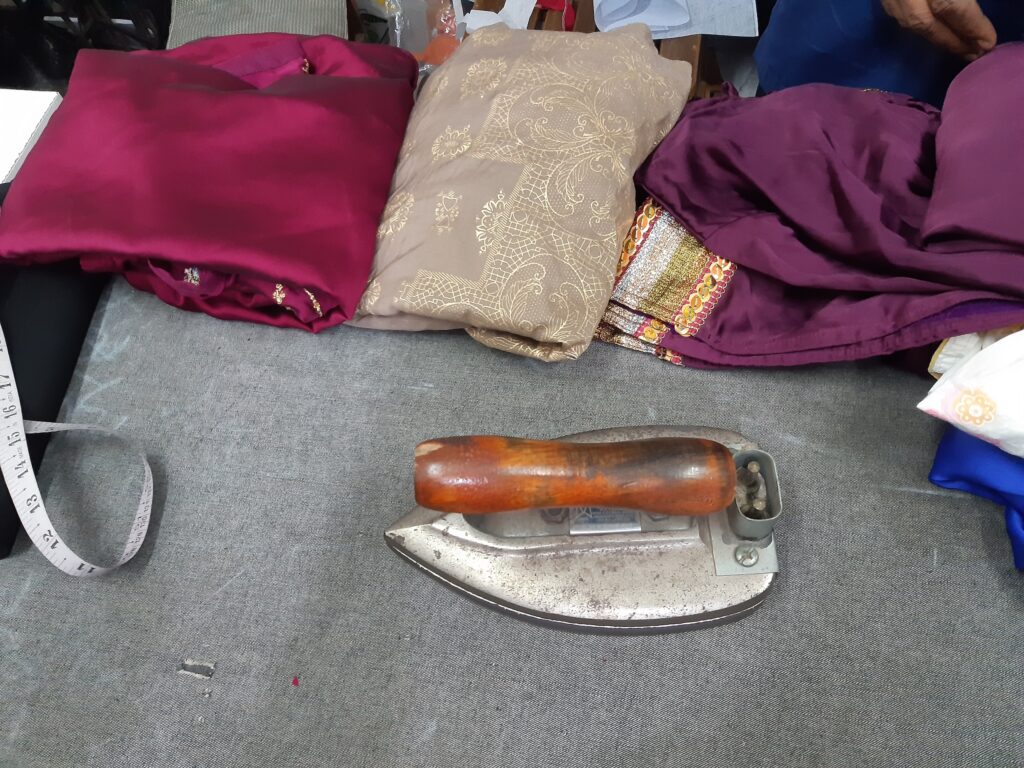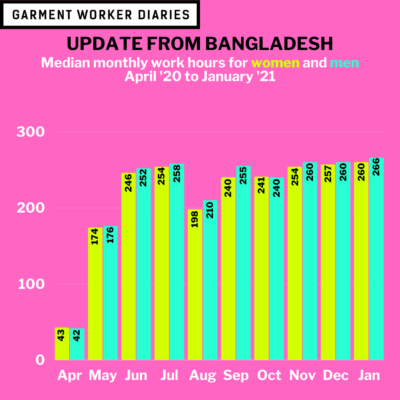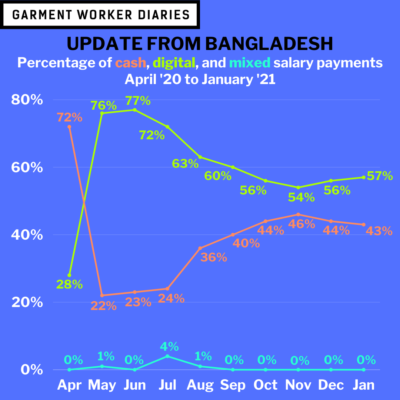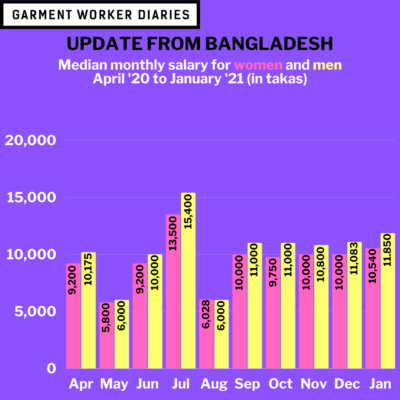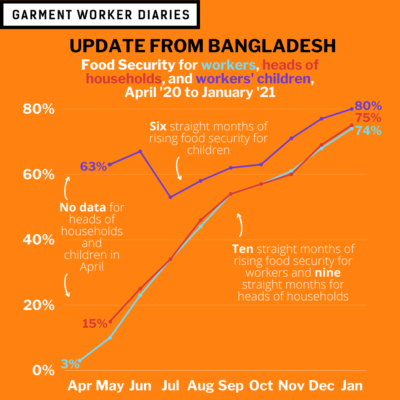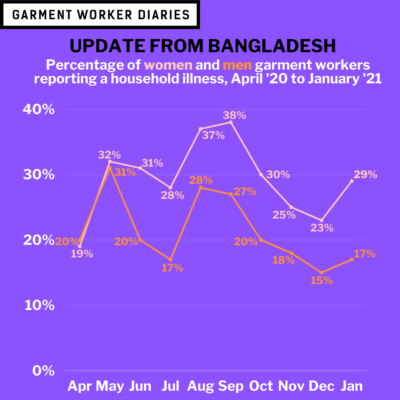In many ways, the employment and wage data for garment workers coming out of Bangladesh throughout 2020 and now into 2021 have been surprising. It was anyone’s guess at the beginning of the COVID-19 pandemic whether or not garment factories would have shut down and remained shuttered, throwing the garment industry and its workers into crisis mode.
From the data MFO and SANEM have seen, however, garment workers have notched another month of habitual employment and commensurate pay. Some, or much, of this undoubtedly has to do with the Bangladeshi government providing stimulus money to the garment industry at the beginning of the pandemic. There have also been reports that garment producing factories in Bangladesh just received an extension on repaying their government-funded loans, which might be keeping some struggling factories afloat.
But some small and medium-sized factories are reportedly having a tougher time staying open. And some factories still have not been paid by certain brands from last year’s canceled orders.
What our data through the end of January 2021 are telling us is that garment workers in Bangladesh both worked and earned more in January than during any month since the pandemic began. However, there may be differences in the experiences of “Tier 1” factories, which are typically larger and able to withstand greater economic shocks, and “Tier 2” and “Tier 3” factories, which may be less resilient.
Next week we will take a closer look at our data to see if this is the case by analyzing brand-facing and non-brand facing factories (brand-facing meaning those factories who are verified suppliers to specific brands appearing on publicly available supplier lists or in the Mapped in Bangladesh data set). About half the factories in our sample are brand facing, but more than half of our workers work in those factories, which is to be expected because those factories tend to be larger. We will be running statistical tests comparing median work hours, salaries, food insecurity, and other indicators of workers’ economic well-being to provide some insight into this issue. Check back here next week for the full report.
Note: Banner photo courtesy of a garment worker in Narayanganj
Employment
In January last month 86% of the garment workers in our study went to work (85% of women and 90% of men). That employment rate has been nearly identical stretching back to June 2020. The median work hours ticked up just slightly, to 260, making January the most-worked month of the entire pandemic. Both women and men worked more in January than at any other time in the past ten months (260 median work hours for women and 266 for men).
Among those who didn’t go to work in January, having quit was still the most common reason (as it has been since June), accounting for 47% of the unemployed. Layoffs, factory closures, suspensions and unpaid leave claimed a similar share of the unemployed in January (30%) as in December (25%). Other reasons for unemployment (maternity leave, illness, returning to one’s village, and other) did not change very much from months prior.
No respondents listed “home quarantining” as an unemployment reason, the fourth such month in a row.
Salary Payments
Excluding the pay period preceding Eid al-Adha when many garment workers received advance salary payments, the median salary payment for garment workers in January increased to its highest level in the past ten months (for all workers, and both women and men). The median salary for all workers was Tk. 11,000, and the median salaries for women and men was Tk. 10,540 and Tk. 11,850, respectively.
Digital Payments and Financial Transactions
Digital salary payments ticked up one point to 57% in January as cash payments ticked down one point to 43% (a very small share of workers received a mix of digital and cash money). The story here is the share of salary payments that was digital had experienced a five-month decrease from a high of 77% in June to a low of 54% in November. But then in December the share of digital salary payments inched back up to 56%. We might be seeing a leveling off, but only time will tell if the détente between digital and cash will be stable.
The digital withdrawal rate fell for its sixth straight month, to 4% of all withdrawals made. This could be an indication that workers are cashing out more of their paychecks instead of leaving a bit of extra money in their bank accounts for use later on.
Other digital financial transactions among and between garment workers in January were conducted at rates similar to previous months.
Food Security and Health
In January, 26% of respondents said they themselves weren’t eating enough; 25% of respondents said the head of their household wasn’t eating enough; and 20% said their children weren’t eating enough. These actually represent the best numbers we’ve received since we began surveying respondents about household food security this past April. January also marked the ninth month in a row that food security for workers themselves and the heads of households improved, and the sixth month in a row of improved food security for children.
The household illness rate ticked up slightly in January to 26% from 21% in December. The share of parties who were ill actually decreased for the respondents themselves, as the share of ill parties who were either children or parents ticked up slightly.
Household injury rates remained low with just 3% of respondents reporting an injury to a member of their household. And as with those reporting a household illness, the vast majority of respondents reporting a household injury told us that they sought medical attention with no problem.
The data are drawn from interviews with about 1,300 workers interviewed weekly from April 2020 to January 2021. The number of worker responses in a particular month vary depending on interview participation rates throughout the month, but were never below 1,206 during this period. These workers are employed in factories spread across the five main industrial areas of Bangladesh (Chittagong, Dhaka City, Gazipur, Narayanganj, and Savar). Just over three-quarters of the working respondents are women, roughly representative of workers in the sector as a whole.
